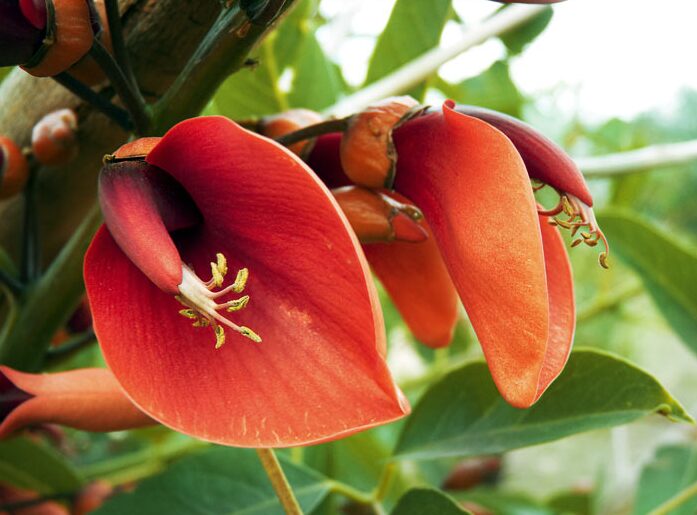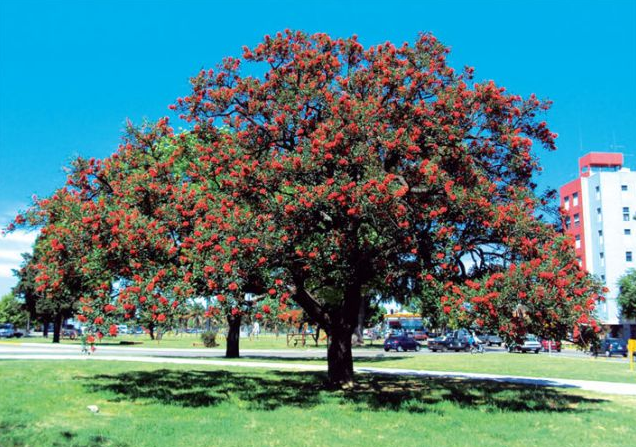The ceibo whose scientific name is Erythrina crista-galli is the National Flower of Argentina. The 23 of December of 1942 by the decree 138.474 of the Executive Power was declared like so by Argentine the ceibo also is known by the names of, gallito or bucaré … Its scientific name is Erythrina Crista-galli . It is a beautiful tree when it is in flowering, provided with stingers . It can reach 20 meters of height and one of diameter in the trunk. It is the National flower and tree of Argentina and national flower of Uruguay.
Ceibo: National Flower of Argentina

Flowers
Flowers in different times according to the region, at the beginning of October, you see ceibos flowered in the Northern provinces. They are born grouped in the green branches, that is to say, formed in the season. They are born one in one, two or three in the armpits of the leaves and are attached to the branches by a floral peduncle. When several flowers are born together, the whole is called inflorescence.
In the ceibo, the inflorescences are of 2 or 3 flowers, these groups usually gather in the ends of the young branches forming “clusters” that attract the attention by its color red carmine. These clusters resemble the crest of a rooster, which is why naturalist Carlos Linnaeus gave it the name Erythrina crista-galli (Ery -tro = red, galli crest = cock crest). The pimpollo is covered by silky petals.

The fruits
It is a long, curved, dry, flat sheath that is between 10 and 20 cm. approximately 2 to 3.5 cm long. wide where 2 to 6 seeds are housed. These are of a dark brown color.
Characteristics of Ceibo
- The ceibo has shallow roots because living in humid areas do not need to extend them too much to obtain water.
- Developing a system of conductive or vascular vessels for this purpose, which distributes water throughout the plant and the excess is eliminated by the leaves.
- The cork that surrounds the trunk does not allow the water to escape.
- During the intense frost the new branches burn and the leaves fall.
- In the small plants all the aerial parts disappear.
- The root remains protected by the soil and in spring it sprouts again.
- The fire also destroys the aerial part of the ceibo and at the same time it grows again.
- Its roots are highly resistant to both frost and fire.
- It is a plant of fast growth but of little longevity by the nature of its soft wood.
- It spontaneously reproduces itself by seed, but for this to happen, it must be near rivers or streams.
- Also by sections and layers that should be made preferably in winter.
- It admits deep pruning, pruning and deformation.











